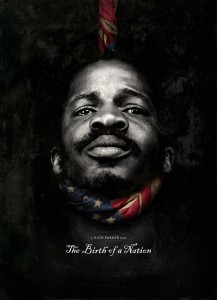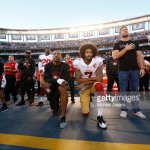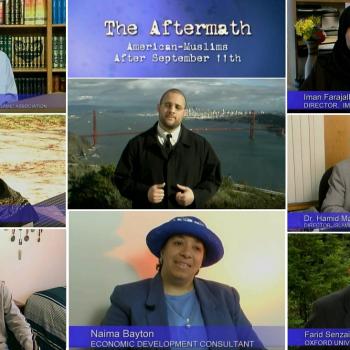Recently my friend, Nizar Ahmed and I had a discussion on facebook about the new movie by Nate Parker called “The Birth of a Nation” which is the story of a slave rebellion in 19th Century America led by Nat Turner. Nizar believed the new film was a “remake” of the 1915 American Silent film of the same name (The Birth of a Nation) by D.W. Griffith, which was a pro-Confederacy, Anti-Black film which portrayed the Ku Klux Clan (the film was originally called “The Clansman”) as a heroic force during the Reconstruction era of American History.
From my understanding, the new “Birth of a Nation” film, which won awards at Sundance, was not a remake at all, but a re-imagined use of the title of an old “racist American film” to now show the story of one of the largest slave revolts in U.S. History. Here is a quote from the writer, director and star Nate Parker on why he chose to name his film as he did:
Griffith’s film relied heavily on racist propaganda to evoke fear and desperation as a tool to solidify white supremacy as the lifeblood of American sustenance. Not only did this film motivate the massive resurgence of the terror group the Ku Klux Klan and the carnage exacted against people of African descent, it served as the foundation of the film industry we know today. I’ve reclaimed this title and re-purposed it as a tool to challenge racism and white supremacy in America, to inspire a riotous disposition toward any and all injustice in this country (and abroad) and to promote the kind of honest confrontation that will galvanize our society toward healing and sustained systemic change.
As a blogger for Patheos, I was invited to screen the new “Birth of a Nation” film before it hits mainstream theaters on Friday October 7th (today). Since I was unable to attend the screening earlier this week, I invited Nizar to watch the film in my place and give me his feedback and review of the film. Here is what Nizar wrote after watching the movie:
 As I sat in my chair, I peered out into the audience to see the sea of faces and different backgrounds. Some, like myself, were thinking why would anyone want to recreate a movie that originally was called “The Clansman”; a movie that promoted the Ku Klux Klan. Others simply wanted to understand more what the movie was about.
As I sat in my chair, I peered out into the audience to see the sea of faces and different backgrounds. Some, like myself, were thinking why would anyone want to recreate a movie that originally was called “The Clansman”; a movie that promoted the Ku Klux Klan. Others simply wanted to understand more what the movie was about.
As the lights dimmed and the movie progressed, it wasn’t anything that people expected. Sure, there have been movies about the slave trade, the abuse the Africans endured and destructive methods used upon them when they were brought to the Americas by force, but this was a movie that had raw emotion beam out at you. Many parts of the movie allowed the audience to feel the pain and oppression that the slaves felt from the brilliant expressions of the actors. Words could not describe the despair that their faces translated to the audience. It actually touched on a number of issues spanning from historical information about the lives and treatment of slaves from the 1800s and even reaching to present day issues of the “black lives matter” movement and the killing of individuals for no other reason than the fact that they were black. Certainly this movie is not for the faint of heart. There are several scenes that are horrific to observe and gives you a visceral response to what you’re seeing; horrific scenes of how African Americans were physically and mentally abused and harmed.
The actors did an amazing job. Some aspects of the camera work probably needed some polishing. The editing of the film really allowed the raw emotions of the actors to truly shine through.
This movie was thought provoking, it left questions if the recreation (of Nat Turner’s story) will actually help build dialogue or merely induce feelings of hate to grow. An example, which has really stuck with me, is when the antagonist gets what’s coming to him, the audience clapped and cheered; as was expected. But when other white people were killed in the movie, who we didn’t see in the story before, the same cheer was exuded. Will this allow dialogue and action to be taken to help eradicate racism or will this cause more hatred and stereotypes?
I left the movie screening wanting more. More answers, more information, more on what the next steps should be to rid our world of this type of hate. What do we do next based off of the various aspects touched on by the film? In present-day issues what can we do about the senseless killings of individuals whose only “crime” if you want to put it that way, is being black? What are we to do about the misrepresentation or whitewashing of our history books and of what happened during the times of slavery? What do we do to rectify these past grievances? I left the movie wanting to know more about what we can do and what we should do. How we can come together to take action to right these wrongs today?
In conclusion, the new “Birth of a Nation” was an eye-opening experience and I recommend people watch it to learn about a part of American history which everyone should know about, whether you are black, white or anything else. If it causes you to think and ask questions, then I believe it has accomplished at least part of the goals which the filmmaker set out to do when he decided to make this film.
Nizar Ahmed is a Senior Video Producer with Liquid Media Studio in the SF Bay Area. He also teaches video editing at Ohlone College in Fremont, CA. He can be reached at [email protected]













